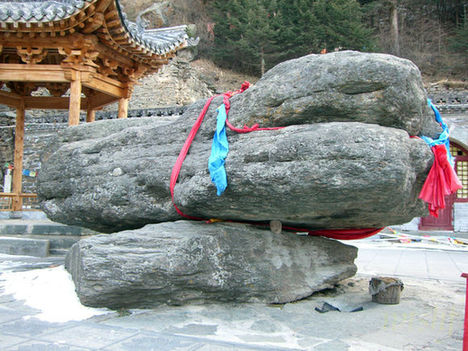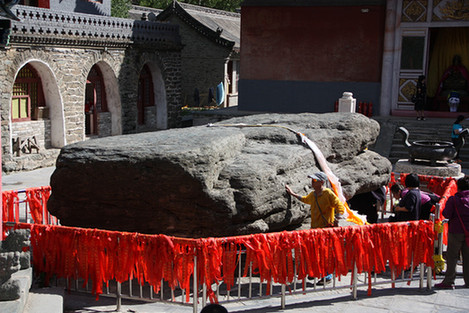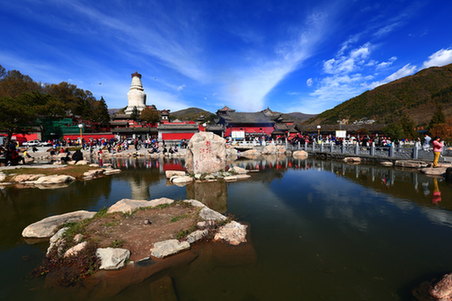Xielong Stone of Mount Wutai
(chinadaily.com.cn)
Lots of fairy tales go on about the Mount Wutai and the legend of the Xielong Stone, also called Qingliang Stone (Cool Stone), is one of them.
 |
|
The Xielong Stone, also known as Qingliang Stone, is a large boulder on which the Dragon King’s kids can rest. It is five meters long and two meters wide. [Photo/image.baidu.com] |
Miraculously, the mountain immediately turned rather cool and vibrant with limpid springs and green plants all over Mount Wutai the instant Manjusri Bodhisattva positioned the rock on the ground. This explains how it got the name Qingliang Stone (Cool Stone) and why Mount Wufeng was called Qingliang Shan (Cool Mountain) afterwards.
However, when the junior dragons came back to the palace and found the green stone on which they had always relied had disappeared, they angrily traced it to Mount Wufeng and searched for it everywhere. The indignant dragons swept the five peaks flat with their tails and scratched the rocks into a mess with their sharp claws. Now the jumbled rocks are still scattered all over the mountain and are called named “Long Fan Shi” (dragon turned stones).
The very clever Manjusri told the young dragons that the stone was put into a cave between two huge rocks. When these dragon princes entered the cave, the two rocks were closed by Manjusri’s incantation, leaving only a narrow crack for light. Manjusri ordered the trapped dragons to practice Buddhism in the cave and asked his disciples to worship them. So that cave is called “Chao Long Dong” (cave for worshiping dragons).
The Xielong Stone is also well known because the story goes that Manjusri Bodhisattva always expounded the teachings of Buddhist sutras while sitting on the stone, with hundreds of followers aside. And rumor has it that on the surface of the stone there is an engraved sutra that is now too vague to identify.
 |
|
Tourists touch the legendary Xielong Stone lying within the railings of the Qingliang Temple about 15 kilometers away from the town of Taihuai. [Photo/sxwts.gov.cn] |
 |
|
Mount Wutai, as a sacred site enshrining Manjusri, Bodhisattva of Wisdom, is historically famous not only for its magnificent number of temples and long-lasting bell sounds but also for a series of mystical stories, which in turn add to the area’s mystique. [Photo/image.baidu.com] |
